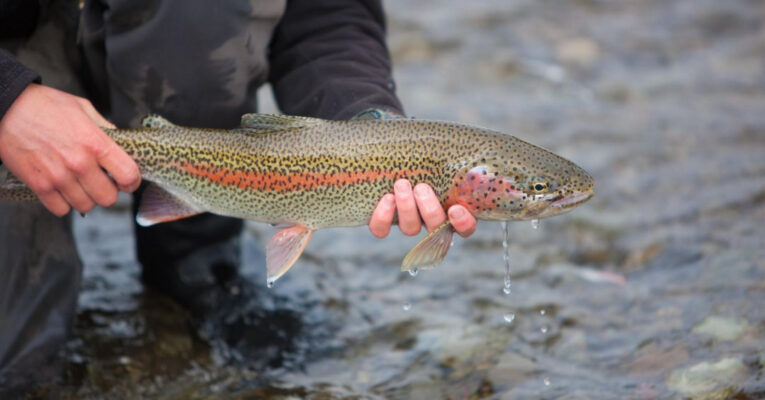Ontario seems like the perfect place of origin for the rainbow trout. With more than 250,000 lakes and one-fifth of the world’s freshwater, you’d think this fantastic fish might have originated here. However, Ontario was just a stop-over on a long journey for the trout from the Pacific Ocean.
The first movement of rainbow trout eastward occurred in New York State in 1874, with the pioneering fish culturist Seth Green attributed to initiating this transfer. It was only a matter of time before Lake Ontario received its first rainbow trout spawning in 1878. And the rest, as they say, is history.
Today, rainbow trout have become quite the catch (pun intended) among anglers, aquaculturists, and seafood lovers. To understand what makes these underwater creatures so unique, here are a few fun facts about rainbow trout:
Are Steelhead Trout Classed as Rainbow Trout?
Yes, they are! A steelhead trout will always be classed as a rainbow; a rainbow trout, however, is only sometimes classed as a steelhead. Steelheads spend their time in estuaries where the river meets the open ocean and only come to spawn in freshwater.
Since they live in salt water, steelheads have a different coloration than rainbows. If that doesn’t spin your head, consider this: two breeding steelheads can produce a rainbow, and two breeding rainbows can produce a steelhead. Time to go fly fishing!
What Do You Call a Group of Rainbow Trout?
The naming of groups of animals can be lots of fun. You may be familiar with a flock of sheep, a herd of cows, or a gaggle of geese. We guess rainbow trout played hooky because they don’t seem to be accepted into a school of fish. Expelled! A group of rainbows is called a hover. This is a little ironic, given that every time we cast our lines, they do anything but!
Rainbow Trout Tastes Great and Is Good for You, Too!
It’s hard to beat the delicious taste of open-fire grilled rainbow trout. However, many people are unaware of how nutritious and healthy this fish is. A 100-gram portion of wild rainbow trout contains a high amount of omega-3 fatty acids, 20 grams of protein, several B vitamins, calcium, magnesium and niacin.
Research shows significant anti-inflammatory and immune system benefits from eating rainbow trout. Want to find out for yourself? Come to the club and drop us a line!
Autumn Colors of Rainbow Trout
Despite not being truly rainbow as their name suggests, rainbow trout have beautiful coloring. Colors and patterns vary based on environment, age, and spawning conditions. They have a reddish stripe from their gills to their tails, with breeding males having a more pronounced stripe.
So, if you catch a rainbow trout with an exceptionally vivid color, it is most likely a boy!
The Franklin Club Has One of the Largest Fish Hatcheries in Canada
With more than 100,000 fish in our private lake and ponds, including the rainbow trout, we at The Franklin Club are proud to offer you an unparalleled angling experience. Our in-house staff aquaculture technologist on hand and advanced hatchery techniques ensure controlled management of a healthy fishery.
Contact us to inquire about our membership opportunities at The Franklin Club.


